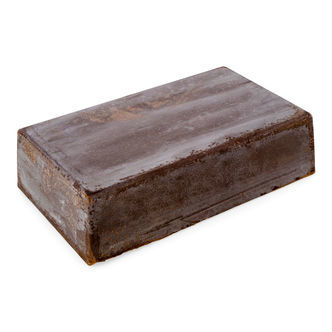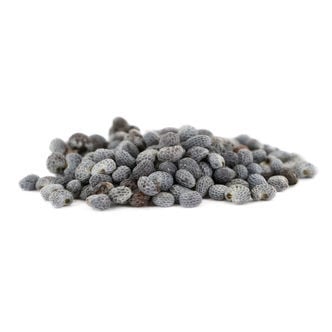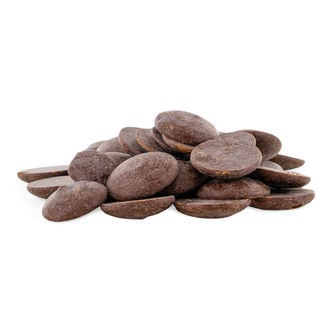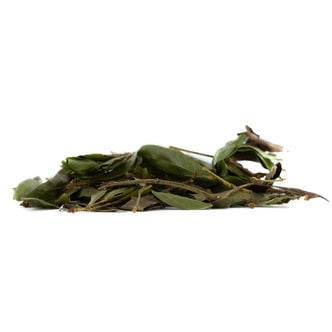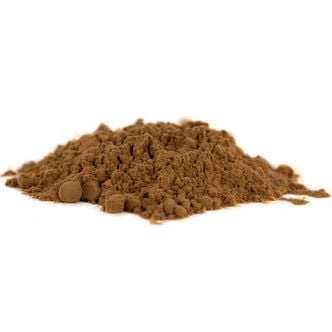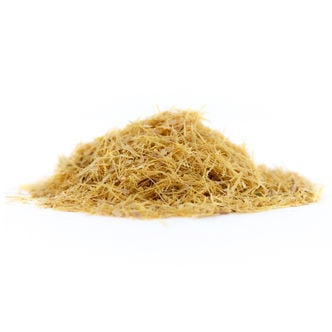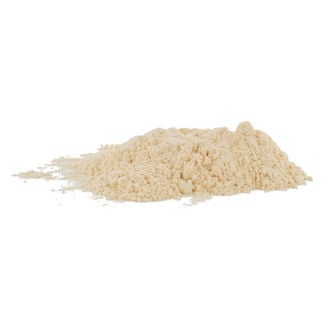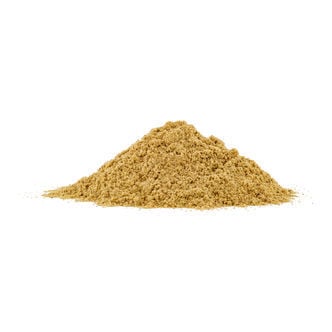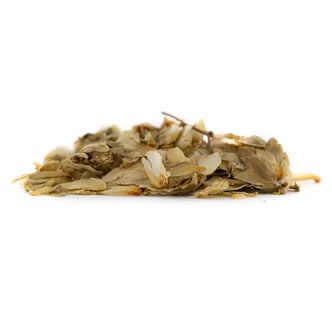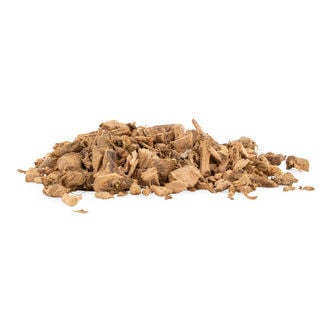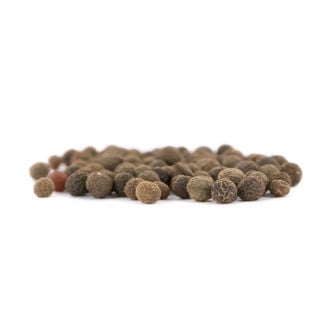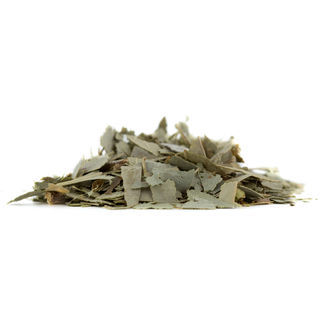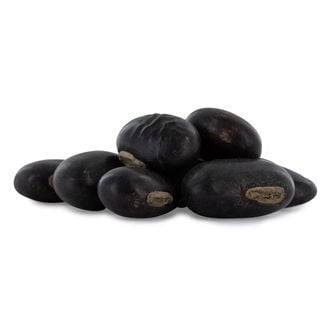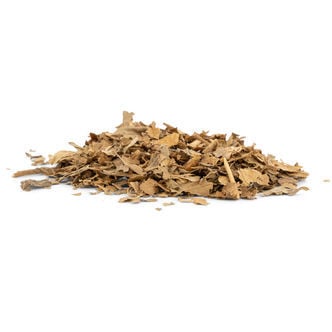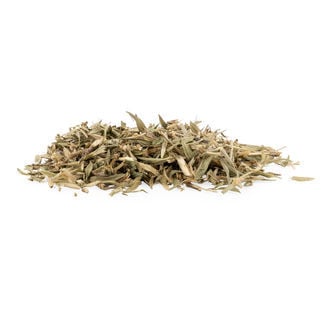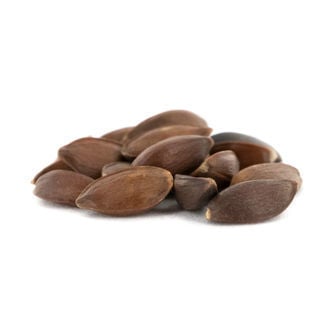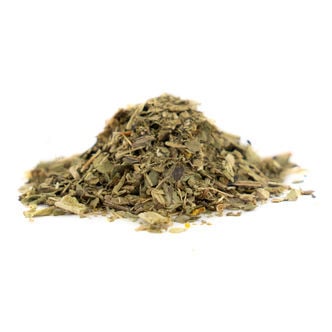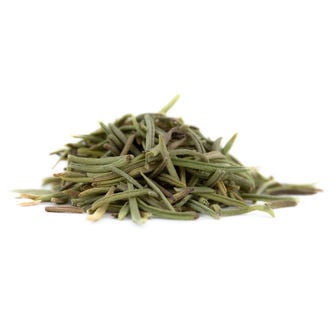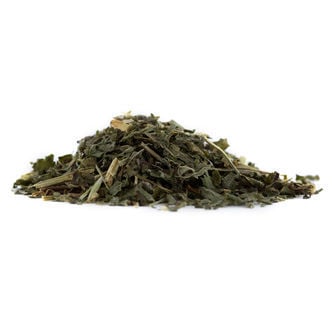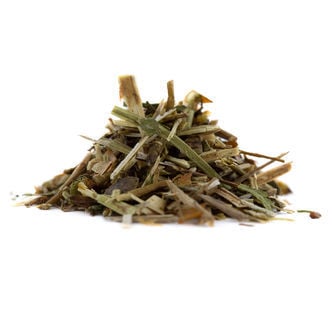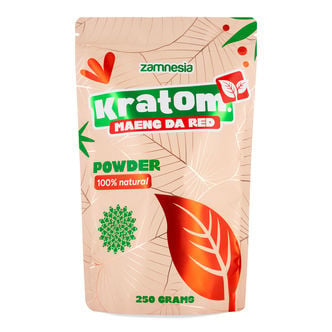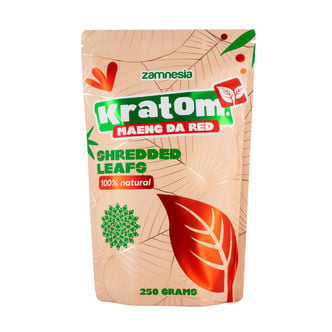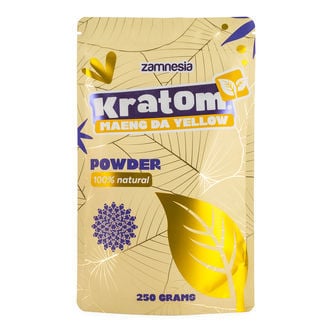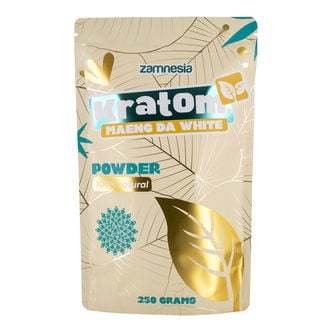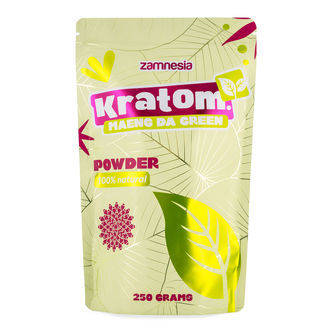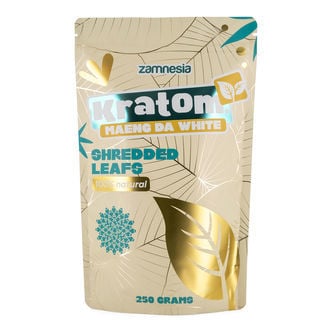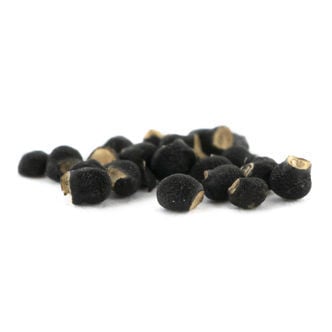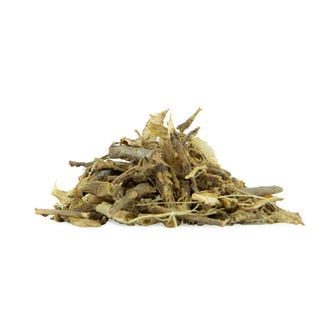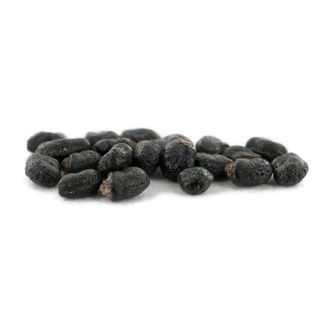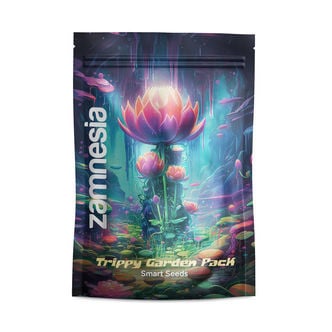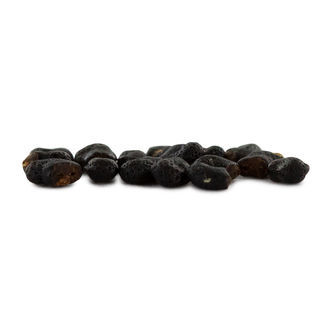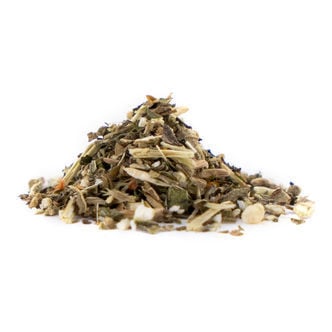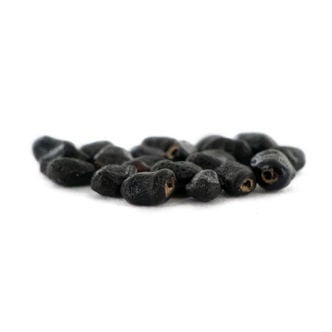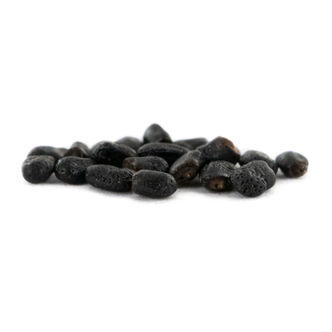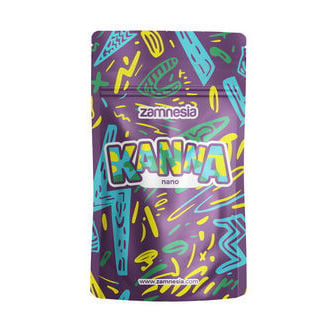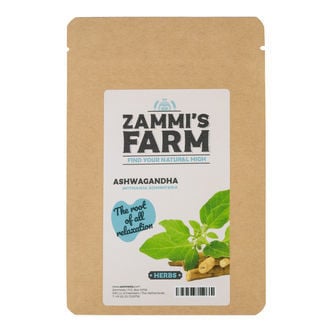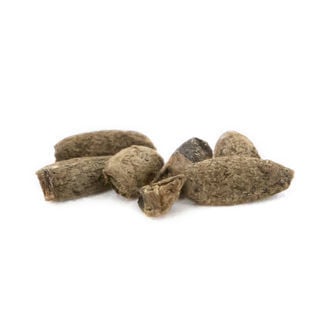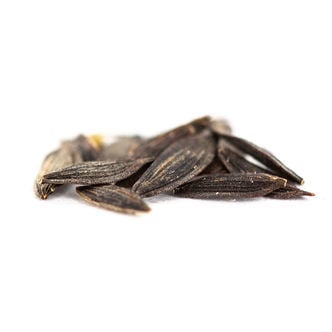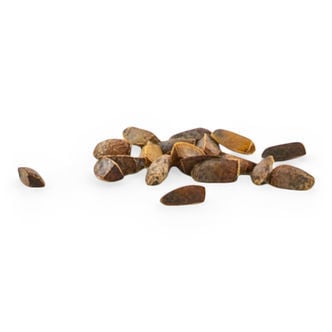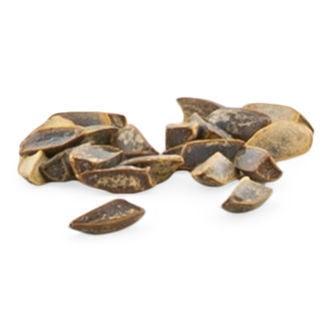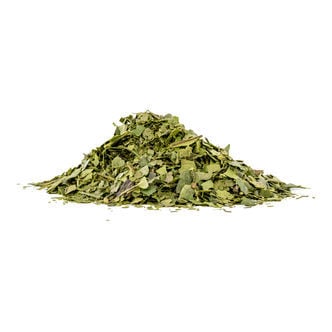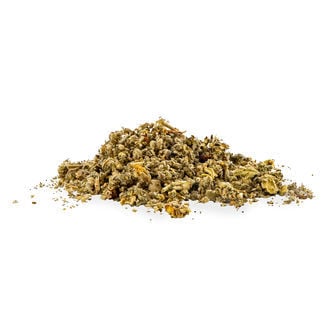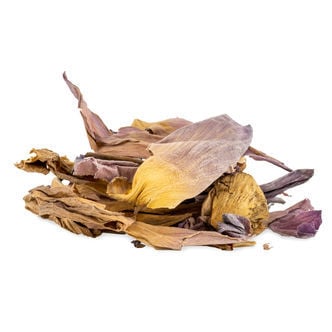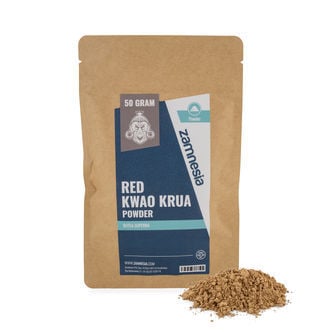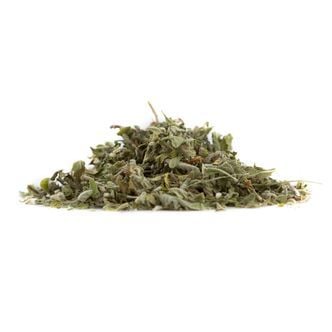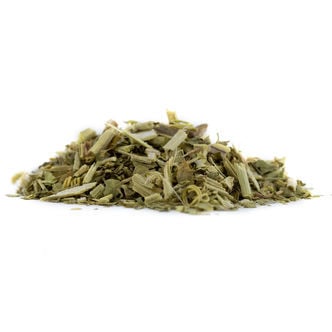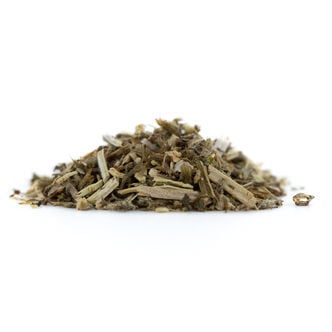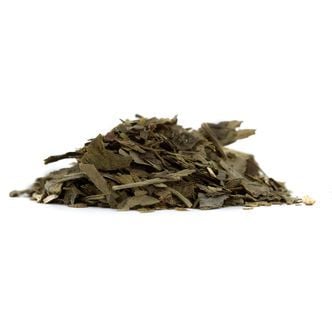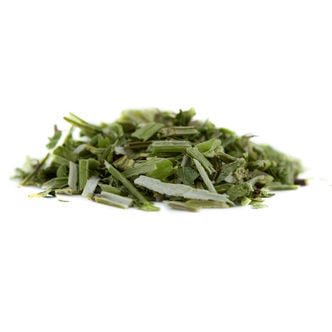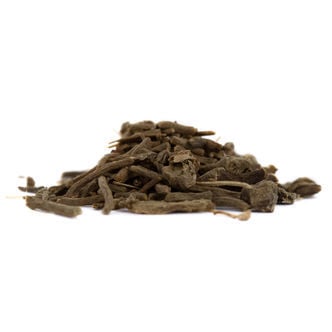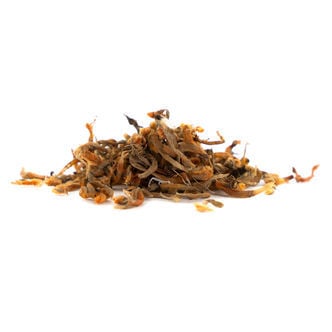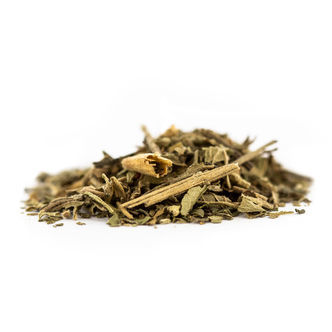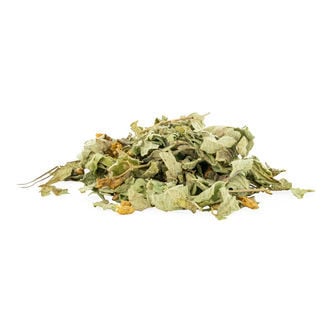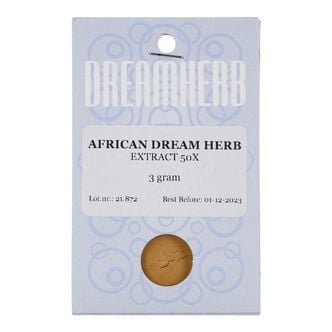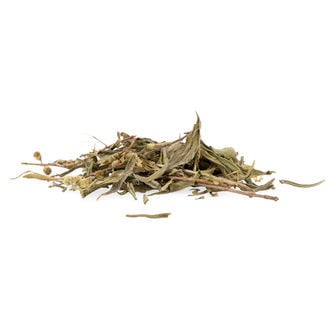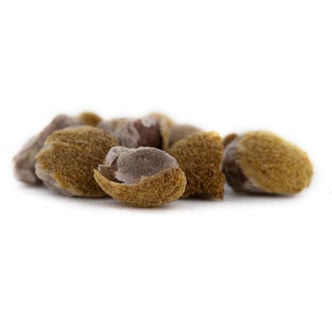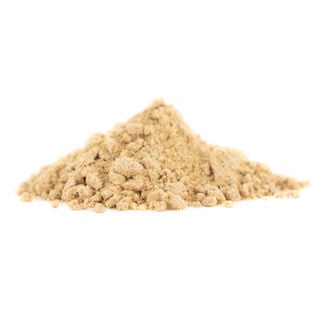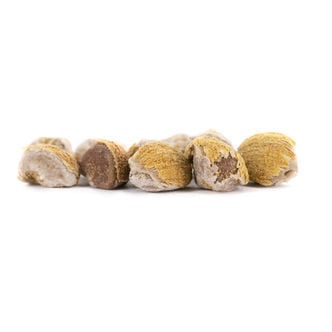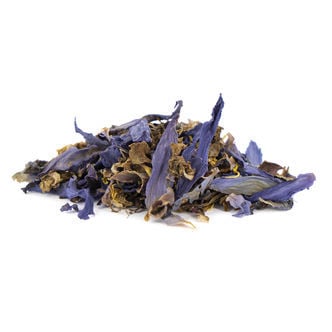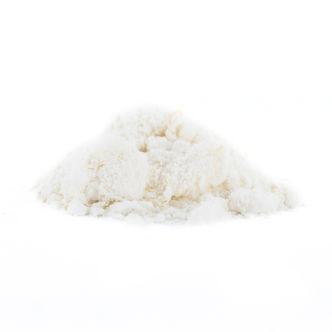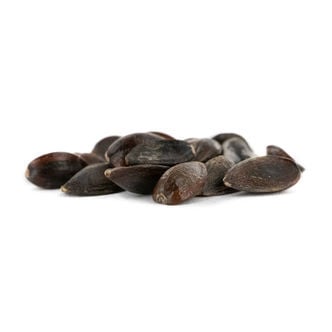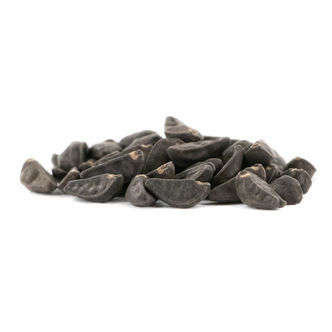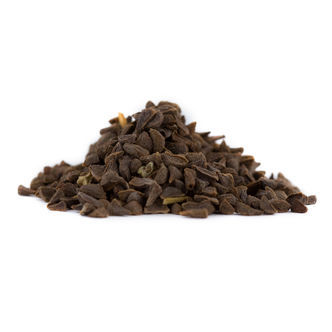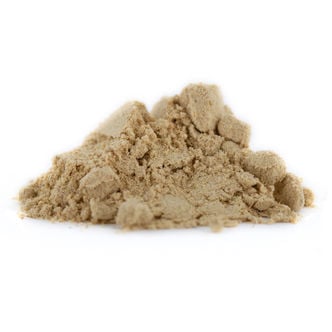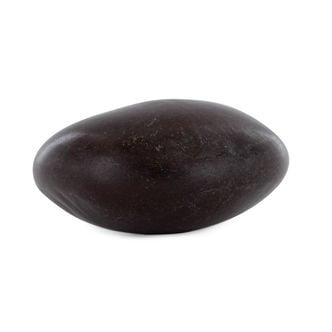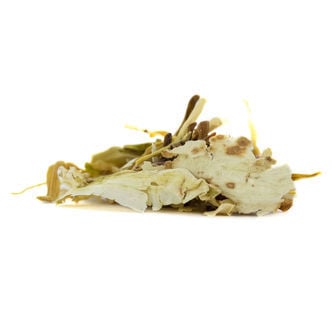Herbs & Seeds
There are 96 products.Herbs and seeds have been around as consciousness-altering substances a lot longer than pills and capsules. While natural products are not necessarily free of all negative side effects, at least they’ve been user-tested for thousands of years. Keep your journey safe and legal with our exotic collection.
Raw Cacao Paste - Peru
A block of raw cacao paste can be put to many uses. Whether you want a comforting drink of warm cacao or to host your own cacao ceremonies, these blocks of paste are the perfect option.
Poppy (Papaver somniferum) Seeds
Poppy (Papaver somniferum) is the plant from which opium, morphine, and heroin are made. The poppy seeds themselves don’t contain any alkaloids. With Zamnesia Poppy Seeds, you can grow your own poppy plants at home with ease!
Raw Cacao Drops - Ecuador
These ceremonial-grade, organic cacao drops originate from Ecuador and come from the Arriba Nacional cacao bean. Whether you're after a hot cup of cacao or want to host cacao ceremonies, these are perfect for the job.
Tea & Herb Infuser (Zamnesia)
Making infusions is the oldest way of extracting herbal essences. This bright blue, leaf-themed food-grade silicone and stainless steel infuser from Zamnesia has you covered. The silicone is heat-resistant so you will never burn your fingers, while the branded Zamnesia drip tray keeps things dry and tidy without having to go to the sink.
Bobinsana (Calliandra angustifolia) 20 grams
Bobinsana (Calliandra angustifolia) is a small shrubby tree that grows in the Amazon Basin of South America. Indigenous peoples of the Amazon regions use the plant which can be found alongside rivers and streams as a stimulant where they prepare a decoction of the roots to take for strength and energy.
Kola Nut - Cola nitida
Because of their stimulating properties Kola nuts were used in magic and as aphrodisiacs, and they still play a strong role in religious and social life of many West and Central African cultures. Europeans began Kola plantations in the 1600s and also took them to the New World - and yes, the original Coca-Cola used them.
Mulungu (80 grams)
Traditionally used in South America, mulungu offers up soothing and relaxing properties. Easy to use, there's little wonder this supplement has found an audience in the modern world. Commonly used in the evening to promote a healthy night's sleep, and with a wide range of intake methods, mulungu has plenty to offer those seeking relaxation.
Wild Lettuce - Lactuca virosa
Wild lettuce (Lactuca virosa), also known as opium lettuce and great lettuce, is a herb native to South and Central Europe - but has since spread to many regions of the world. This dried wild lettuce is ideal for brewing into a tea.
Ginseng (Panax ginseng) 25 grams
Panax ginseng, Asian ginseng, or simply ginseng, is the root of a perennial plant native to the mountains of East Asia. Rich in a variety of unique phytochemicals, ginseng has a long and rich history as a traditional herbal preparation. Powdered ginseng is made from dried and pulverised ginseng roots, and can be mixed into smoothies, juices, teas, and other beverages.
Muira Puama (Ptychopetalum olacoides) 50 grams
If you're into the mighty world of plants and herbs, you're sure to have heard of muira puama. Often sold in the form of capsules or bark, this plant has a long history of holistic use. At Zamnesia, we offer muira puama (Ptychopetalum olacoides) bark in 50g packets, ready to be brewed into a tasty tea.
Hops Flowers (20 grams)
It is known, that hops are used to stabilize beer, but there is more to these flowers of the hop plant Humulus lupulus. As an old household remedy, they were used to treat restlessness. Enjoy the rich flavour and effects that these dried flowers provide.
Galangal (Alpinia officinarum) 50 grams
Galangal is a member of the ginger family (Zingiberaceae) and is commonly used in many cultures across Southeast Asia as an additive in foods and beverages, as well as traditional herbal preparations. Galangal is also closely related to turmeric, and boasts a very strong ginger-like flavour (much stronger than regular ginger).
California Poppy (Eschscholzia californica) 100 seeds
California poppy makes a stunning addition to many ornamental gardens, earning attention due to its bright and vibrant orange shades.
Thyme (20 grams)
Thyme has been used for holistic purposes since the days of ancient Rome, but it's also extremely flavourful too! This 20g pack of shredded thyme is perfect for adding to meals, smoothies, and homemade cosmetics. So if you've been looking for a great way to incorporate some thyme into your day, look no further!
Eucalyptus globulus (20 grams)
Eucalyptus leaves possess a potent mix of aromatic terpenes that light up the olfactory system and put the mind at ease. The leaves of this towering tree make a great addition to a relaxing blend.
Velvet bean | Mucuna pruriens
The Velvet bean (Mucuna pruriens) is a tropical plant that has long been used in many cultures around the world.
Lavender (20 grams)
Lavender has a long history of use - it is even mentioned in the Song of Solomon. Lavender is used as a condiment in various foods, beverages, and teas and as a fragrance in cosmetics. Enjoy the highly aromatic experience this fragrant herb provides!
Bay Bean (Canavalia maritima) 20 grams
Also known as beach bean or Mackenzie bean, bay bean (Canavalia rosea sin. C. maritima) is a flowering plant that grows in many of the world's tropical areas, mainly on beaches, cliffs, and dunes. It has a high tolerance for saline conditions and grows well in sandy soils. The root, leaves, seeds, and flowers of Canavalia maritima have long been used in food and for holistic purposes.
Maconha Brava (Zornia latifolia) 20 grams
Growing all over Western Africa, maconha brava (Zornia latifolia) is an unassuming plant with a fascinating chemical structure. And despite only showing its flowers for several hours, locals have learnt to harvest both the flowers and leaves to create a refreshing tea with mystical properties.
Green Mormon Tea | Ephedra viridis Seeds
Green Mormon tea (Ephedra viridis), also known as green ephedra or Indian tea, is a shrub that grows in dry areas of the Western United States. 20 seeds
Prickly Poppy (Argemone mexicana)
The Mexican prickly poppy (flowering thistle, cardo or cardosanto as the Spanish call it) is a plant that is native to the American tropics but is now found throughout the world. It also grows in tropical Africa as well as in India and Nepal. The extremely hardy plant develops bright yellow flowers and produces yellow latex.
Rosemary (Rosmarinus officinalis) 20 grams
Rosemary is aromatic, flavourful, and extremely versatile. Whether you're looking to brew a tea, add a little to a blended smoothie, bake it into bread, or even place some in an aroma lamp, there's plenty to get out of this perennial plant. This 20-gram pack is ideal for adding a little rosemary into your daily life.
Lemon Balm (20 grams)
Lemon balm (Melissa officinalis) has been used for millennia and today herb lovers are starting to discover the aromatic delights of vaporizing it. In traditional folk medicine it was often used to alleviate coughs and sneezes, and circulatory insufficiency.
St John's Wort
St. John's wort, also known as "perforate" or "common" St. John's wort, is a plant with yellow flowers, that some people, at first glance, may mistake for a common, roadside weed. It has been used for centuries as an herbal mood enhancer. Enjoy the rich flavour and effects of one of Mother Nature's miracle plants.
Kratom Powder - Maeng Da Red (Zamnesia)
If it's heavy effects you're after, this is the Kratom strain for you. Zamnesia's Red Maeng Da Kratom Powder is made in Thailand from locally sourced and traditionally processed Kratom leaves. Every scoop packs a strong, long-lasting effect ideal for experienced users looking to unwind. Order yours now and enjoy a potent hit of natural alkaloids!
Kratom Shredded - Maeng Da Red (Zamnesia)
Need a heavy hit of Kratom? Look no further—Zamnesia's Red Maeng Da Shredded Kratom is made from unique Red Thai Kratom leaves, specially selected for their powerful effect. Ideal for experienced users looking for a lasting experience. Order yours and enjoy one of Thailand's favourite Kratom varieties at home now.
Kratom Powder - Maeng Da Yellow (Zamnesia)
Red Maeng Da is renowned for its potency and White Maeng Da is preferred by active individuals. Enjoy the perfect mix of these two classic Thai Kratom varieties with Zamnesia's Yellow Maeng Da Powder, featuring a blend of White and Red strains. Perfect for any time of the day. Order yours now.
Kratom Powder - Maeng Da White (Zamnesia)
White Maeng Da is native to Thailand, where it's treasured for its wide variety of benefits. Zamnesia White Maeng Da Kratom Powder is made from only the best white-veined Maeng Da plants, ideal for busy individuals looking to support their schedule with a solid routine. Order yours now and savour the effects of this ancient Asian plant at home now.
Kratom Powder - Maeng Da Green (Zamnesia)
Green Maeng Da is Thailand's #1 Kratom variety, made from only the finest green-veined Thai Kratom leaves. Enjoy its well-balanced effects at any time with this potent, all-natural powder from Zamnesia. Sourced directly from Thailand, our Green Maeng Da Kratom Powder is rich in alkaloids and packs the perfect punch for any occasion. Order yours now.
Kratom Shredded - Maeng Da White (Zamnesia)
Made from select leaves, Zamnesia's White Maeng Da Kratom is perfect for anyone living an active lifestyle or with a busy agenda. Dried according to traditional Thai practices, this loose-leaf White Kratom blend preserves the plant's natural alkaloids, delivering a potent rush whenever you need it. Order yours now.
Peyote (Lophophora williamsii) 20 seeds
With our freshly harvested high quality Lophophora williamsii (Peyote) seeds you can now grow your own Peyote cacti at home. As compared to fully grown Peyote cacti plants, cultivating your own Peyote can be more economic because you can grow them at relatively low cost. Plus, being able to watch your Peyote seeds grow to full-grown flowering plants can make for a fascinating hobby all on its own!
Kanna 5 grams
Kanna (Sceletium tortuosum), also known as Channa or Kougoed, is a plant commonly found in South Africa. Indigenous tribes have been using Kanna for its mood-enhancing and relaxing properties for thousands of years. Now, it has gained popularity in the West.
San Pedro (Echinopsis pachanoi) 20 seeds
Echinopsis pachanoi, the original San Pedro cactus is one of the sacred cacti of South America. For centuries, this cactus has played an important role in Shamanic culture. The cactus is a native to Bolivia and contains psychoactive compounds, the most important one Mescaline. With our fresh Echinopsis pachanoi (San Pedro) seeds you can now easily grow your own San Pedro cacti at home!
Trippy Garden Pack - Smart Seeds
This Trippy Garden Pack contains a range of different seeds that will flourish into plants containing legal psychoactive compounds. If a herb garden doesn't quite cut it for you, then these seeds will give you a real project. Experiment with a range of psychoactive plants and see which you like the best.
Peruvian Torch (Echinopsis peruviana) 20 seeds
Echinopsis peruviana, better known as the Peruvian Torch cactus is another of the hallucinogenic cacti that is native to South America. The Peruvian Torch contains the psychoactive alkaloid mescaline which makes for powerful, altered states of consciousness. With our fresh Peruvian Torch (Trichocereus peruvianus) seeds you can now grow this sacred cactus easily at home.
Wild Dagga | Leonotis leonurus
Wild Dagga is another member of the vast catalogue of psychoactive herbs found on earth. The African plant is reported to have a similar high to that of cannabis, yet much less potent. The dried herb can be smoked or used to make decoctions.
Echinopsis macrogona (Trichocereus macrogonus) 20 seeds
Echinopsis macrogona (AKA Trichocereus macrogonus) is a sacred cactus. Like the Peruvian torch cactus, Echinopsis macrogona contains mescaline which gives it powerful psychedelic and hallucinogenic properties. With the Echinopsis macrogona seeds available at Zamnesia you can now grow this sacred cactus at home!
Bolivian Torch (Echinopsis lageniformis) 20 seeds
The Bolivian Torch (Echinopsis lageniformis) is one of the psychedelic cacti of South America that plays an important role in Shamanic rituals. It is similar in appearance to the San Pedro cactus but with fewer and wider ribs. Like the San Pedro cactus, the Bolivian Torch contains a number of psychoactive alkaloids including the powerful psychedelic compound Mescaline.
Nano Kanna
Looking for a more pleasant way to enjoy kanna? Look no further than Zamnesia's Nano Kanna, made from ultra-fine powder that melts in your mouth or nose without leaving behind any gritty, dirty residue. Better yet, Nano Kanna is fast-absorbing and delivers faster effects than traditional kanna supplements.
Ashwagandha (Withania somnifera) Seeds
Ashwagandha (Withania somnifera) is a shrub native to India, and it has been used for many years in the Ayurvedic tradition. Attractive and easy to cultivate, why not try growing it in your very own garden?
Klip Dagga (Leonotis nepetifolia) Seeds
Native to Africa and Southern India, klip dagga is a colourful plant with a unique appearance. Fortunately, it's also pretty simple to grow. Sow the seeds indoors at the end of April in moist soil, and keep the same conditions until they germinate. Then, move them outside so they can flourish. Provide them with plenty of light and warmth, and harvest leaves and flowers when ready.
Wild Lettuce (Lactuca virosa) Seeds
Wild lettuce (Lactuca virosa) thrives in cool and cold conditions and produces edible leaves throughout most of the year, even into winter. Plus, it's full of nutrients. Get growing!
Marihuanilla (Leonurus sibiricus) Seeds
A beautiful plant with a tall central stem and enchanting purple/pink flowers, marihuanilla (Leonurus sibiricus) can easily take centre stage in any garden. Its smell is similar to that of a cannabis plant and it attracts plenty of helpful pollinators. Plants enjoy sunny spots and well-drained soil, and overall, they are not excessively demanding.
Wild Dagga (Leonotis leonurus) Seeds
Originating from South Africa, wild dagga makes for an eye-catching plant, thanks to its bright orange colouring. Not only appealing to the eye, this plant is also easy to cultivate, making it appropriate for growers of all levels. The seeds can be sown anytime, but perform best between February and May. A little upkeep is required, and they'll deliver year-round.
Holly Tree (Ilex guayusa) 50 grams
Commonly cultivated in Ecuador and native to the lush rainforest of the Amazon, holly tree (Ilex guayusa) is an evergreen tree whose leaves have been consumed in South America for thousands of years. It's often referred to as the sister to yerba mate, but with a less bitter and generally more pleasant flavour. You can now get holly tree in 50g packets from Zamnesia.
Marshmallow | Althaea officinalis (50 grams)
Marshmallow, mallow, or Althaea officinalis is an ancient herb with a long trajectory of folk and culinary use across many cultures, including the Ancient Egyptians, the Middle East, Europe, and Asia.
Pink Lotus (20 grams)
Used for many centuries, pink lotus still has a place in the modern world. By brewing up a batch of pink lotus tea, it's never been easier to experience all of the aromatic nuances that this flower provides.
Red Kwao Krua (Butea superba)
This powder comes straight from the roots of Butea superba. This versatile vine has many possible effects, and it has long been utilised in traditional holistic practices of China and India. Now you can experience everything this extract offers, whether you're looking to create capsules or add the powder to food and drink.
Damiana | Turnera afrodisiaca
Damiana (Turnera afrodisiaca) has a relaxing effect with a euphoric high for 1-2 hours after taking, and like its Latin name suggests, is a mild but effective aphrodisiac.
Passionflower (80 grams)
Passionflower is a soothing plant that can be enjoyed in numerous ways. It can be made into a tea, tincture, or capsules—the possibilities are nearly endless. Traditionally used for holistic purposes in the Americas and Europe, passionflower has found its place in the modern day.
Catnip - Nepeta cataria
Catmint (Nepeta cataria), also known as catnip, is an intoxicant for cats (in fact most felines, even lions) and a mild relaxant in humans. It is a flowering, perennial plant native to Asia and Europe that grows easily even in poor soils.
Ginkgo biloba
The Ginkgo tree is one of the oldest types of trees in the world with no close living relatives. The compounds have antioxidant and free radical properties.
Skullcap (50 grams)
Make a nice tea from Skullcap (1 teaspoon is enough) and become a bit more relaxed thanks to the mild high it induces. Skullcap gets its name from its flowers, which have the shape from a human skull. The Latin name for Skullcap is Scutellaria galericulata.
Valerian (80 grams)
Valerian (Valeriana officinalis) is an old Germanic ritual herb, sacred to the goddess Hertha. The herb used to be hung outside houses as a protection against witches and evil. It has also been used as an aphrodisiac, and its effects are well known. Mixed 50-50 with kava-kava it is said to produce ‘beautiful dreams’.
Leonotis Leonurus Flowers (5 grams)
The leaves and buds of this South African bush are smoked by the Khoikhoi and Bushmen as an inebriant, and in Africa it is known as ‘wild dagga’. In Mexico and California it is used as a cannabis substitute.
Klip Dagga - Leonotis nepetifolia
Klip Dagga (Leonotis nepetifolia) grows in the tropical and subtropical regions of Africa, India, and Latin America. The dried leaves and flowers of Klip Dagga induce a relaxing and mildly euphoric effect.
Dream Herb (Calea zacatechichi) 20 grams
Used by indigenous tribes of Mexico, Calea zacatechichi is known by several names, including “dream herb”, “God leaf”, and “bitter grass”. For centuries, shamans have been ingesting the herb during their religious practices, and for healing purposes. Nowadays, this plant is available to anyone willing to try it, and its dried leaves can easily be steeped into a tea.
Ashwagandha (Withania somnifera) 50 grams
Often referred to as “Indian ginseng” or “winter cherry”, ashwagandha is a plant whose roots or leaves have been used for thousands of years in Ayurveda. Its botanical name is Withania somnifera, and it's native to India, the Middle East, and some parts of Africa. Whether you choose powder or shredded roots, it's easy to add this herb to your diet.
African Dream Herb Extract 50x
Known for its potential ability to soothe and relax the mind, African Dream Herb is ideal for use before heading to bed. It's said that it can even help to promote lucid and vivid dreaming, and has been used in traditional African shamanic ceremonies for many years. Now, you can sample it from the comfort of your home thanks to African Dream Herb Extract 50x.
Sinicuichi (Heimia salicifolia) 20 grams
Favoured by the Aztecs, Sinicuichi (Heimia salicifolia) is a sacred herb teeming with alkaloids. Native to the Americas, you can now experience it direct from Zamnesia. It’s never been easier to tap into the wisdom of ancient cultures.
Muira Puama (Ptychopetalum olacoides) 25x Extract
Muira puama is a shrub native to Brazil and the Amazon. With a myriad of possible benefits (in and out of the bedroom), this extract is arguably the easiest way to experience it for yourself. Versatile and easy to use, it's rich in alkaloids, flavonoids, and essential oils. Muira puama makes for the perfect daily supplement alongside a varied diet.
Hawaiian Baby Woodrose Madagascar (Argyreia nervosa) (10 seeds)
Due to popular demand, we've added this Madagascar variety of Hawaiian Baby Woodrose Seeds, which is reportedly stronger than other varieties.
Kanna Extract ET2
Kanna is a narcotic plant that is native to South Africa. It is believed that tribesmen know about the relaxing and euphoric properties of Kanna for more than 300 years. The ET2 Kanna extract is the most potent form of Kanna extract available. Used as a snuff, the ET2 Kanna extract it will make for the fastest-acting and strongest Kanna effect providing relaxation together with euphoria.
Hawaiian Baby Woodrose
Hawaiian baby woodrose (Argyreia nervosa) is a perennial climbing vine with large heart-shaped leaves and white trumpet-shaped flowers. Originally native to India, it now grows around the world, including Hawaii. Its large furry seeds grow in seedpods and contain the psychedelic LSA.
Blue Lotus - Nymphaea caerulea
Blue Lotus (Nymphaea caerulea) is first mentioned in the Egyptian Book of the Dead; blue and white lotuses were the most important ritual plants in ancient Egypt. The flowers were worn in the hair of the living and the dead, and were an important ornamental element in Egyptian art.
Uvuma-omhlope (3 Grams)
Uvuma-omhlope is used by tribes across Africa for its ability to bring you closer to the spirits in your dreams. It is well known to induce lucid dreams with prophetic and enlightening visions. Using Uvuma-omhlope as part of your regular night time schedule will ensure dreams to remember!
Ephedra (Ma Huang) 20 seeds
The dried leaves of the ephedra plant act as a natural stimulant and energizer and have an appetite-suppressing effect. With our fresh ephedra sinica seeds you can now grow your own ephedra plant easily at home.
Morning Glory (Ipomoea tricolor) 10 grams
The Morning Glory vine was favoured by the ancient Maya civilisation thanks to its "heavenly blue" appearance and abundance of the psychedelic tryptamine lysergic acid amide (LSA). Once used ceremonially, its seeds are now available to buy from Zamnesia.
Peganum Harmala (10 grams)
Peganum harmala or Syrian rue is a perennial bush native to the eastern Mediterranean now found across northern India and as far as Manchuria. It produces white flowers that develop round capsules containing around 50 brown seeds.
Maca
Originally grown in the Andes Mountains, maca is a resilient and versatile plant who’s roots were used throughout the Inca empire. It an exclusive food of the upper classes and rewarded to accomplished warriors. For good reason as well, maca is highly nutritious and increases energy – try this super food for yourself. 80 Grams
African Dream Seeds (1 seed)
African Dream Seeds are known for their longstanding cultural significance, lucky nature, and the ability to bestow vivid and memorable dreams. Easy to prepare and consume, Entada Rheedii seeds ensure a lively slumber.
White Lotus (20 grams)
White Lotus is extremely similar to Blue Lily and can produce a sense of floating and euphoria when ingested. The dried buds and petals can be prepared as a tea or concoction. Content: 20 grams













 United States
United States
